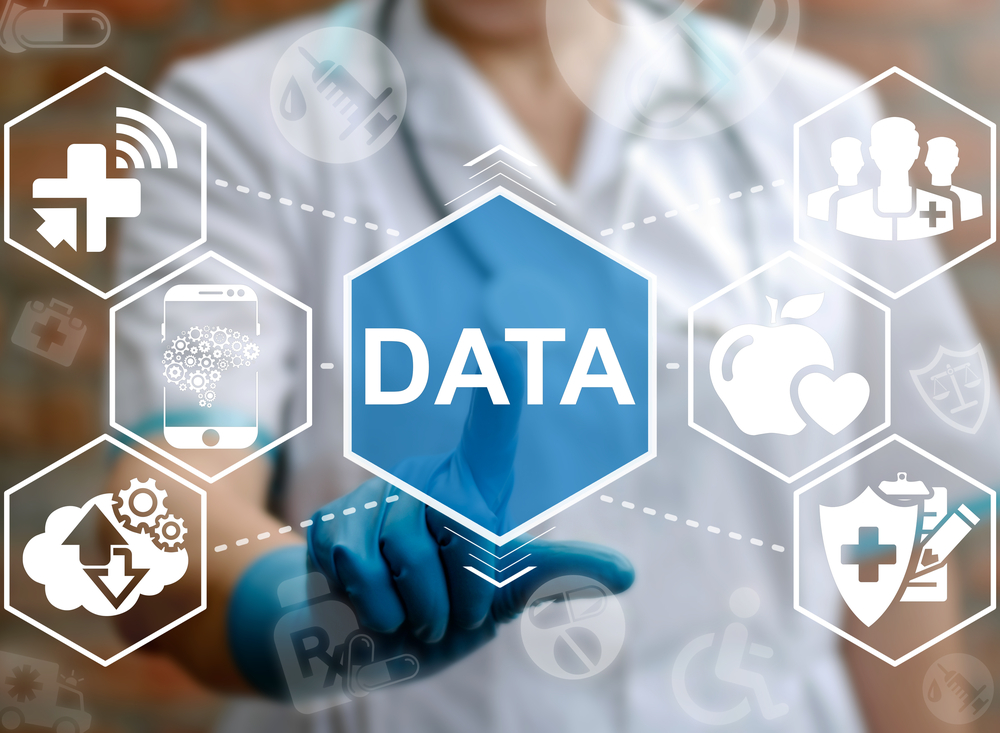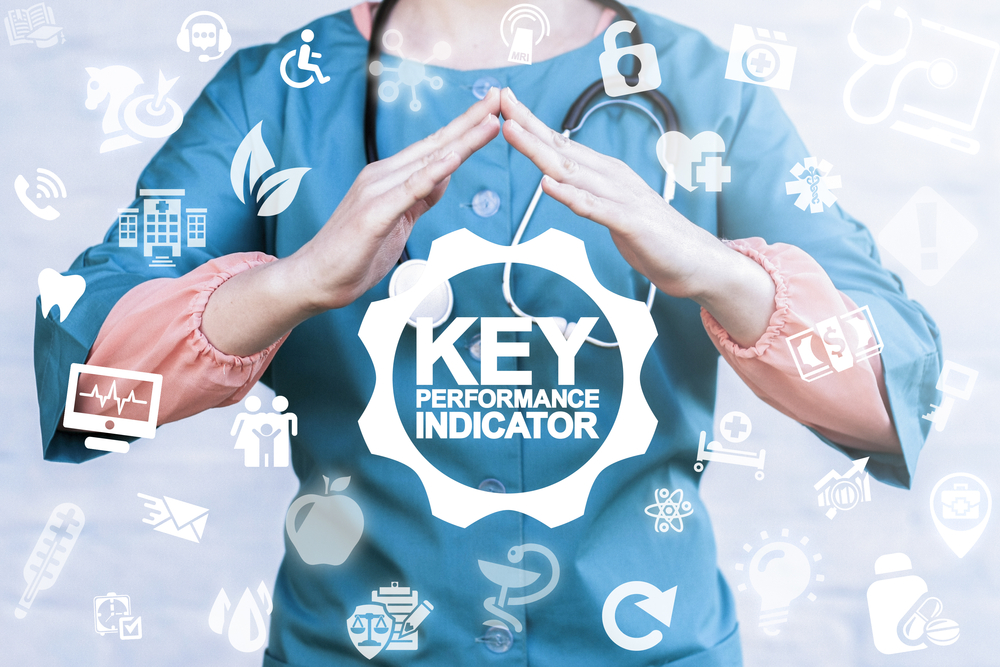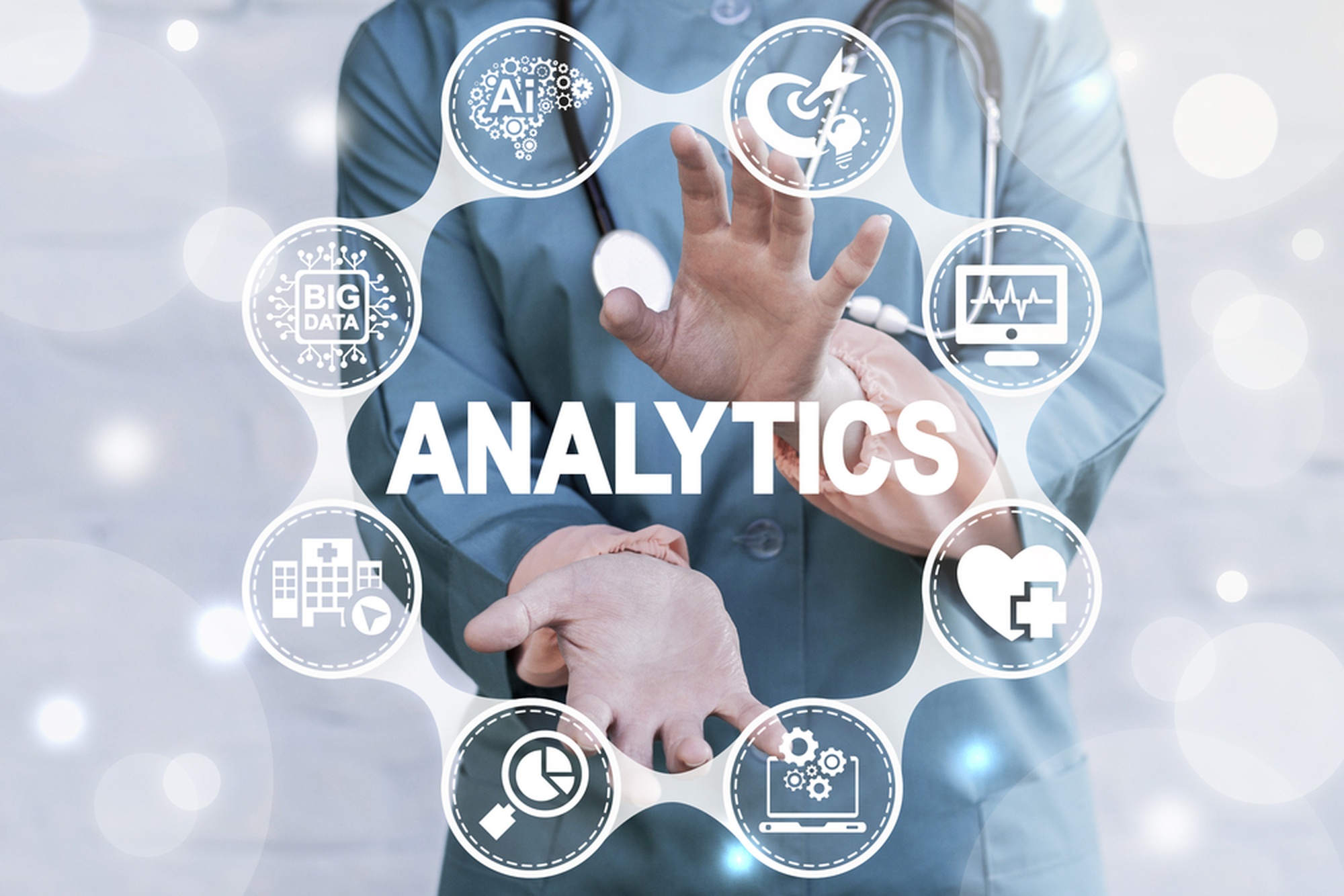Medical organizations have always struggled with the challenge of delivering high-quality services while ensuring optimal resource allocation and reducing expenses on administrative operations. Doing all this without developing healthcare analytics software is neither effective nor reasonable.
Today, the COVID-19 pandemic is still on the loose, which has sped up the digitalization of the healthcare industry. As a result, more and more healthcare data are held in electronic systems, creating perfect conditions for the growth of the healthcare analytics market. For hospitals and clinics, this means new opportunities for increasing the quality of care, improving decision-making, and reducing costs.
But building a custom healthcare analytics solution is a complex endeavor. It requires adherence to industry regulations, resolving interoperability issues, and overcoming usability challenges.
Demigos has extensive expertise in healthcare software development. In this article, we’ll explain why you need to create or integrate a healthcare analytics system and how it can help reduce your expenses. We’ll also discuss the latest healthcare technology trends that are influencing the market and the process of healthcare analytics system development.
Benefits of using a healthcare analytics system
 A lot of processes take place in a healthcare facility, from lab research to workforce rotation. Each of these processes produces a ton of data. If you build a healthcare analytics system, you’ll have access to valuable insights from the collected information, which may lead to more data-driven decision-making, reduced expenses, and other benefits. Let’s talk about this in more detail.
A lot of processes take place in a healthcare facility, from lab research to workforce rotation. Each of these processes produces a ton of data. If you build a healthcare analytics system, you’ll have access to valuable insights from the collected information, which may lead to more data-driven decision-making, reduced expenses, and other benefits. Let’s talk about this in more detail.
Read also: Why is Data Quality Important in Healthcare
Making a diagnosis
To make the correct diagnosis fast, it’s vital for doctors to have access to the patient’s EHR and be able to quickly compare new lab results and symptoms with the person’s previous admissions or health issues. This is where healthcare analytics software may come in handy.
When each lab analysis result is just a sheet of paper in the patient’s file, it’s just a piece of paper that can be lost and has less meaning. However, combine it with the data on the patient’s previous treatments, daily regimen, hereditary diseases, and pathologies in their family history, and you get a piece of a puzzle that can help clinicians solve medical mysteries.
Improving diagnostics
Research from the National Cancer Institute suggests that machine learning models can help clinics without cancer treatment specialization diagnose cancer and benign tumors with high accuracy, even in early stages, based on MRI scans.
The wide adoption of ML-powered analytics can help increase the consultant and diagnostic capabilities of hospitals and clinics. As a result, more dangerous disease cases may be identified early on, leading to improved access to medical care even for people who live in remote areas.
Predicting treatment outcomes
When it comes to predicting treatment outcomes, healthcare analytics help take the guesswork out of the equation. By having access to a huge database of anonymized EHR data, an ML algorithm can predict the possible treatment outcome with high precision, based on the symptoms, previous medical history of a patient, and lab analysis data.
This provides the opportunity to adjust the treatment plan to make it more effective, with improved patient experiences and decreased liability expenses.
Managing the inventory
Restocking medicines is a constant responsibility for a hospital as it touches on many aspects of overall financial operations. If you implement analytics tools, you’ll be able to digitally forecast the need for medications in your storehouses based on the number of admissions and the drug usage patterns. When using a predictive analytics system in healthcare, a hospital avoids overspending on medicines that won’t be used before their expiration date while also avoiding a medicine deficit.
Preventing equipment crashes
Hospital facilities use lots of machinery that tends to fail at the most inopportune moment. If you had only known that the module in question had been overheating for some time...In that case, you would not have been without an important piece of equipment for three days leading to the postponement of several operations, endangering the patient’s well-being.
When using analytics software for preventive maintenance, your equipment is monitored just as closely as your patients, so the sensors raise an alert at any discrepancy. This allows you to target and fix the issue before it becomes a problem, removing the need to halt surgical operations for repairs.
In general, building a custom healthcare analytics solution is the right choice to help you optimize costs and ensure better patient outcomes. The medtech market trends for 2021-2022 support this claim, as more and more healthcare providers are transforming their operations to integrate analytical tools and reap the benefits of this innovative technology. We’ll discuss this next.
Healthcare analytics market trends

The market of healthcare analytics tools is predicted to cost nearly $41 billion by 2025. Below we list the major trends that will likely affect the solutions developed in the near future:
-
Health record digitalization. The COVID-19 pandemic is not yet defeated, and it has clearly highlighted the need to digitize health records and improve interoperability in the medical industry. EMR/EHR interoperability is being actively developed and introduced in many healthcare organizations to achieve this goal. Health record digitalization will help analytics systems gather more data and make more precise diagnoses.
-
Telemetry. Web-based and mobile remote monitoring applications help patients to perform self-assessments and aggregate a wealth of IoMT data to support clinical decision-making. The telemetry sector in healthcare alone will account for more than $27 billion by 2025.
-
Telemedicine. This technology ensures physicians can examine patients cared for at home or monitor patients with chronic diseases remotely, note any irregularities, react to first symptoms, and provide treatment proactively. This is yet another invaluable source of real-time statistical data for healthcare analytics.
-
AI/ML solutions. From drug research and sample analysis to robot-assisted surgery, AI and machine learning have gained quite a wide adoption in healthcare. The AI/ML value in the healthcare market is steadily growing and is expected to reach more than $33 billion by 2025. AI-powered healthcare analytics allow clinicians to make informed decisions based on a broad range of available data.
-
IoMT technology. This is a powerfully growing trend that amalgamates many innovations and is used in association with telemedicine and telemetry. The Internet of Medical Things includes the use of various wearable sensors and can cover cases from simple skin temperature measurements to glucose levels in patients with diabetes or heart rhythm monitoring. It is invaluable in providing the information needed for healthcare analytics.
So far, we have identified the main trends, but there are many more to take into account. As the healthcare analytics software market is dynamically changing, it is challenging to keep a finger on the pulse. That’s why, when you decide to go for healthcare analytics system development, it’s best to hire a team with in-depth industry expertise.
Key features of a custom healthcare analytics solution
 While every system is uniquely tailored to the needs and business strategies of a particular organization, there are some must-have healthcare analytics software features you can expect to have in your solution.
While every system is uniquely tailored to the needs and business strategies of a particular organization, there are some must-have healthcare analytics software features you can expect to have in your solution.
Unified electronic data warehouse
To have precise analytics, you need to store a ton of structured data in a centralized location. By storing your data in a uniform format, you can ensure interoperability with systems from other departments or facilities.
Detailed dashboards and reporting
Healthcare analytics are of little value if the decision-makers can’t get results in a format they can easily understand. The dashboard is where most of your personnel spend most of their time when using the system. It should provide in-depth insights into all aspects of the hospital, financial, and all other types of data in a user-friendly format. Easy data segmentation, customizable reports, charts, and diagrams also enable on-point analytics and precise healthcare data visualization to support decision-making.
Online real-time availability
Every patient or staff member should have instant access to all the information and EMR details required to provide quality medical services. That’s why your end-to-end healthcare analytics solution must ensure real-time availability and secure access anytime and anywhere. This entails the need for connection encryption to ensure data security and HIPAA compliance.
Holistic data management
The most time-consuming part of data management is duplicating it to all the systems in which it should be available. By integrating your CRM, EHR/EHR software, billing, and other systems into a holistic platform, you ensure the data instantly propagates to all the modules, and data management becomes much less of a chore. This greatly simplifies healthcare analytics as you have access to all reports and charts based on the data you gather—and these can easily be provided to all relevant stakeholders and departments.
Predictive analytics
Once you have a number of different streams of data pouring into a central warehouse from a variety of sources, it is only natural to train a predictive analytics model to track patterns and predict possible outcomes based on historical data.
A custom predictive analytics system for healthcare can take your decision-making and hospital management to a whole new level. Such a prediction system will capture all data, analyze them, and display the results in an easily understandable manner.
IoT and IoMT integration
It is much better to detect a serious condition at an early stage than to deal with the aftermath. Various smart sensors and wearable devices supply AI models with information to predict potential crises based on real-time IoT data. This assists in ensuring continuous care with minimal resources.
As already mentioned, these features are just the basics, and every purpose-built solution will be different as it will be personalized to your organization’s needs. Naturally, this will affect the final cost of healthcare analytics software development. However, having a clear picture of the results you seek will help speed up the software development process.
Healthcare analytics software development step-by-step
 Healthcare analytics software follows the same development process as any other software. It just has to ensure that the new features interact well with the systems already in place, which might mean building special healthcare APIs to support such integrations. The rest of the steps remain typical for product development.
Healthcare analytics software follows the same development process as any other software. It just has to ensure that the new features interact well with the systems already in place, which might mean building special healthcare APIs to support such integrations. The rest of the steps remain typical for product development.
Defining your requirements
When you decide to develop healthcare analytics software, you should define the functions it must perform to deliver value to your organization. For that, gather feedback from your stakeholders and personnel, as they will be the ones working with this system. This is vital to ensure no important functionality is overlooked. If capabilities need to be added to the project scope mid-development, it may change the architecture of the whole product.
Research and discovery phase
You’ll have a series of in-depth consultations with a business analyst, project manager, and the future development team to clearly communicate every aspect of the functionality you expect from this software. The initial requirements gathered from your team will transform into the scope of work, recommended technology stack, and approximate project cost.
Design and prototyping
At this stage, the designers prepare initial designs, mockups, and clickable prototypes showcasing the future healthcare analytics platform. You can provide feedback and adjust modules immediately to ensure the planned software looks and works exactly as you need it to.
Development and testing
The development begins by building an MVP (Minimum Viable Product) to deliver the key functionality quickly. Once you are able to test it in live conditions, you can determine if any adjustments are needed. Then the development and integration with your other systems will continue iteratively, ensuring the continuity of operations and expanding the range of available features with time. This will give your staff the opportunity to learn the new functionality step-by-step and flatten the learning curve.
Post-release support
Even when all the planned features are delivered, further insights based on real-world product usage are still possible. These might require restructuring the workflows, rearranging the design elements, truncating the features, or integrating new ones. In any of these cases, the software developers stand ready to help.
Off-the-shelf vs custom healthcare analytics solution
 Naturally, in such a lucrative market, there are multiple purpose-built solutions readily available. But you can also opt for custom development. Let’s discuss the pros and cons of both options.
Naturally, in such a lucrative market, there are multiple purpose-built solutions readily available. But you can also opt for custom development. Let’s discuss the pros and cons of both options.
Pros and cons of purchasing off-the-shelf analytics software
Off-the-shelf analytics software provides access to a wide range of pre-configured options but is not built according to your unique requirements. You might have to put up with some missing features for the sake of shortening the integration process. Let’s take a closer look at the advantages and downsides of buying a ready-made healthcare analytics solution.
Pros of off-the-shelf products:
-
Wide range of features. Such software is generally able to perform the most common functions in a wide range of fields.
-
In-depth support documentation. Such solutions usually come with an in-depth knowledge base, learning guides, and other support documentation.
-
Wide-scale interoperability. Big vendors make sure their solutions are compatible with a lot of other third-party systems.
Cons of off-the-shelf products:
-
Limited customization. While there can be many functions, you are usually very limited in what you can customize to suit your needs.
-
Steep learning curve. Unless you pay for a training course, your employees are left with a reduced knowledge base to answer questions on an unfamiliar product in a limited time.
-
Vendor lock-in. Once you select a product and integrate it, dropping it becomes nearly impossible or very costly.
Coupled with huge upfront investment costs, these challenges lead to many healthcare providers choosing to create a healthcare analytics system for their individual needs from scratch.
Pros and cons of developing a custom healthcare analytics solution
Building a custom healthcare analytics solution takes some time, but it is developed according to your unique organization’s needs and workflows. We consider the benefits and shortcomings of custom-built healthcare analytics software in more detail below.
Pros of custom software:
-
Built to meet your needs. As it is based on your company’s requirements, it delivers exactly the functionality you need and interacts well with the other systems you use.
-
Deep personalization. All the software features are built to ensure maximum workflow personalization. For example, there may be a report wizard to allow different departments to create custom reports tailored to their needs and save them as templates for further use.
-
Affordability. Due to agile development methodology with an iterative approach to delivery, the cost of the project is split in time, making it much more affordable for healthcare providers, whose resources are already spread thinly.
Cons of custom software:
-
Needs time. As a new product is designed and built from scratch, it takes several months before an MVP is ready for a pilot run.
-
Needs to be integrated. The new software must be integrated with all the other systems you use, which might require building some specific APIs.
-
Needs documentation. The developer and support documentation will have to be written along with the software, and most of the questions will initially have to be answered by support representatives.
All in all, choosing to build custom healthcare analytics software is a better choice as you have more control over the process and its outcomes with less investment. However, there will definitely be obstacles to overcome.
Challenges of implementing healthcare analytics software

We briefly touched on this topic in the previous section but will expand on it a bit more below. These are the challenges you can expect to encounter during the implementation of a new platform:
-
Usability. Healthcare analytics is a complex multi-facet process with a variety of data. You need to insist on usability to ensure your future platform users get the value they need from this data and do it in a simple and intuitive way.
-
Knowledge continuity. Until a detailed knowledge base and developer documentation are available, staff rotation limits your capability to use the system to the fullest. Regular training sessions will help solve this challenge.
-
Staff resistance. While your personnel might declare their willingness to adopt new approaches, it usually takes time before they can effectively change their modus operandi and before the system starts delivering the value you expect. This is why it’s crucial to clearly communicate the benefits of your healthcare analytics system implementation from the very beginning.
In any case, if you want your organization to remain competitive and profitable, healthcare digitalization is just a question of time. The sooner you are able to fully utilize your data, the better prepared you will be for what the future holds.
Here is how Demigos can help
If you want to develop a healthcare analytics system, you are on the right track. The latest technology advances can effectively help in reducing the hurdles and expenses of running a healthcare organization and improve treatment outcomes, patient experiences, and staff engagement.
Demigos has ample experience solving practical healthcare challenges with intuitive and versatile health tech tools. Should you need additional consultations or want to discuss the specifics of your project—contact us, the team is always glad to help!






